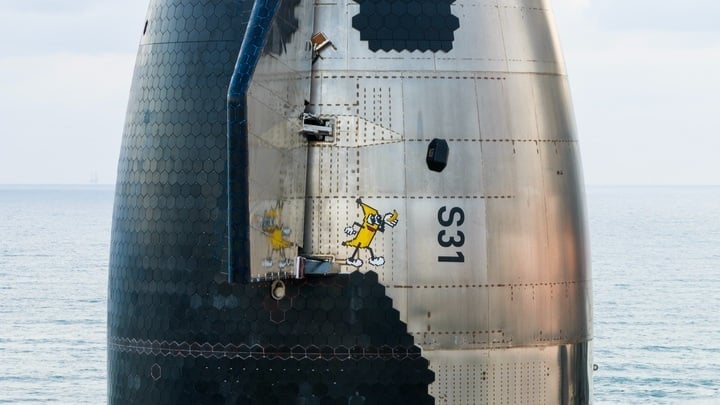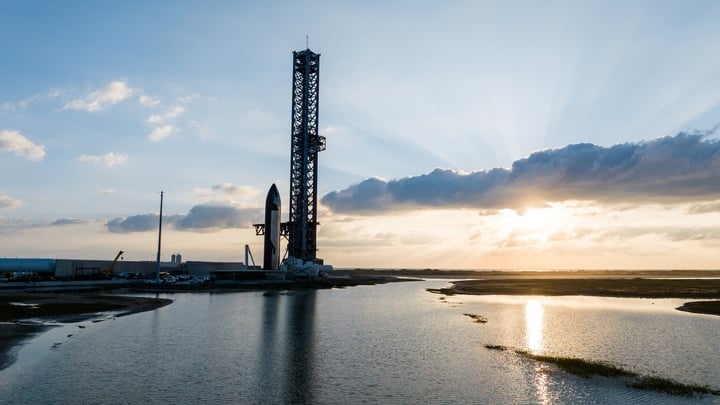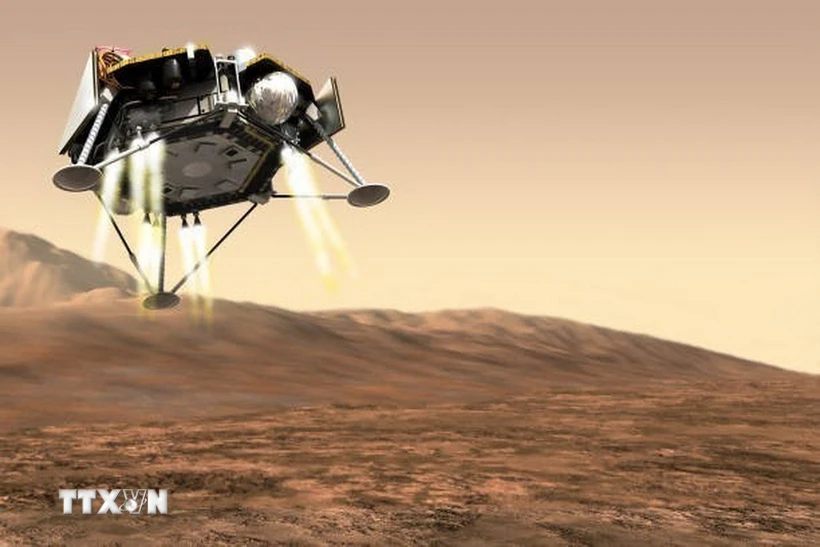With each successful test, SpaceX’s 400-foot-tall Starship rocket gets closer to the milestone of launching a crew into orbit. But before it can reach that goal, the ship must successfully meet certain technical requirements.
SpaceX said the next test of Starship, its sixth, is scheduled for Monday evening, November 18 — about a month after the most recent successful launch.
The Super Heavy booster successfully landed on the launch pad.
The 30-minute launch window will open at 5 p.m. EST, SpaceX said. As of Nov. 13, launch preparations were underway at SpaceX’s Starbase in Boca Chica, near Brownsville, Texas.
Previous tests have taken place in the morning, and this time SpaceX will adjust the flight launch time to late afternoon for “better visual conditions,” the company said.
Test more essential features
SpaceX has spent years developing and testing Starship, which is classified as a supercavity launch vehicle and is also the largest and most powerful rocket ever built.
The entire craft consists of two main parts: the 164-foot-tall Starship spacecraft and the 230-foot-tall “Super Heavy” rocket underneath. SpaceX envisions Starship as a fully reusable transportation system that can take both humans and cargo to Earth orbit, the Moon, and even Mars.
On test run 6, Starship is expected to follow the same trajectory over the Gulf of Mexico as previous flights, landing for the third time in a row in the Indian Ocean. As for the booster, SpaceX hopes to autonomously return it to the landing pad and be caught by two giant mechanical arms, as we saw on test run 5.

A close-up of the Starship’s outer shell. The black honeycomb panels are a thermal protection material that helps the hull withstand high temperatures when it rubs against the atmosphere. (Photo: SpaceX)
This time, SpaceX plans to re-ignite the Raptor engine in space to perform an orbital burn — a crucial maneuver that helps the spacecraft reach the speed and thrust needed to maintain stability on its journey, a requirement for future missions orbiting Earth or beyond.
As Starship reenters the atmosphere, SpaceX will adjust the spacecraft’s flight angle to a “higher angle of attack”—that is, increasing the angle between the spacecraft’s flight path and the horizontal line. This will test the spacecraft’s ability to withstand the high temperatures and pressures of atmospheric exposure. This will allow SpaceX to collect data on Starship’s controllability and durability in the face of harsh conditions during landing, preparing it for future missions.
The company reportedly made several pre-flight hardware upgrades and safety improvements around the propulsion system. The upcoming flight test will also evaluate a new thermal protection system.

Starship is ready at the launch pad. (Photo: SpaceX)
SpaceX said it expects a sonic boom in the area around the landing site as the booster slows down from hypersonic speeds.
Going to Mars
First and foremost, Starship will play a key role in the international space race to return humans to the Moon. As part of NASA’s Artemis program—the first US lunar exploration program since Apollo in the 1970s—it is awarding SpaceX $4 million to develop a spacecraft capable of safely returning astronauts from orbit to the lunar surface.
According to NASA's plan, astronauts aboard the Orion capsule on the Artemis III mission will rendezvous and dock with Starship while orbiting the Moon. Two astronauts will then transfer to Starship to land on the lunar surface, while the remaining two astronauts will stay on Orion.
In the coming years, NASA’s Artemis program aims to build a base on the south pole of the Moon, where ice – which could be plentiful – would be mined to provide drinking water, oxygen, and hydrogen and oxygen for rocket fuel, making crewed trips to Mars a reality – something Elon Musk plans to do as early as 2028.
The first crewed test flight of Starship is scheduled for the third and final mission under the Polaris Program, funded by SpaceX and billionaire Jared Isaacman. The program’s first mission, Polaris Dawn, in September included the first commercial spacewalk, with crew aboard the Dragon capsule.
Source




![[Photo] Closing of the 11th Conference of the 13th Central Committee of the Communist Party of Vietnam](https://vstatic.vietnam.vn/vietnam/resource/IMAGE/2025/4/12/114b57fe6e9b4814a5ddfacf6dfe5b7f)


![[Photo] Overcoming all difficulties, speeding up construction progress of Hoa Binh Hydropower Plant Expansion Project](https://vstatic.vietnam.vn/vietnam/resource/IMAGE/2025/4/12/bff04b551e98484c84d74c8faa3526e0)






















































































Comment (0)